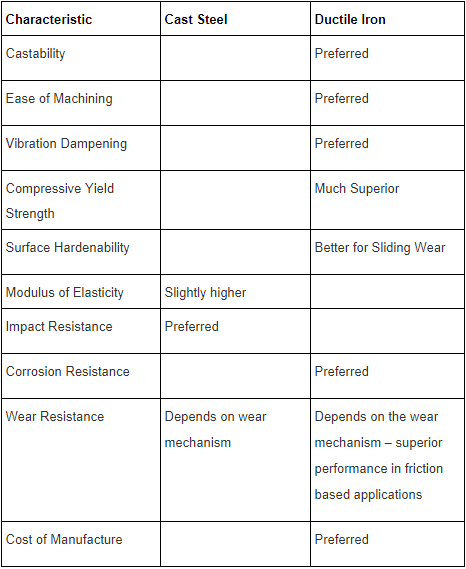
Cast iron contains over 2 of carbon and cast steel contains less than 2 of carbon in weight. Steel and Cast iron are alloys or iron in which the main alloying element is carbon.

Great what does that mean in terms of material properties.
Difference between cast iron and steel. The key difference between steel and cast iron is that the steel is ductile and malleable whereas the cast iron is hard and has high compressive strength. Steel and Cast iron are alloys or iron in which the main alloying element is carbon. These alloys are useful in many applications due to their increased desirable properties.
The most notable difference between steel and cast iron is the carbon content. Cast iron has a carbon content greater than 2 while steel has a carbon content of less than 2 with many steel alloys having less than 1. Great what does that mean in terms of material properties.
Cast iron is a ferrous material containing more than 2 carbon. On the other hand Cast steel contains less than 2 carbon. So composition-wise the main difference is the amount of carbon present in cast iron and steel.
Both cast iron and steel provide very good casting properties and therefore used for a wide range of applications. The main difference between the two elements is that steel is produced from iron ore and scrap metals and is called an alloy of iron with controlled carbon. Whereas around 4 of carbon in iron makes it cast iron and less than 2 of carbon makes it steel.
The Differences between Cast Iron and Cast Steel The main chemical difference between all irons and steels whether cast or not is that iron is a pure metal and steel is an alloy. The first major difference between the cast iron and cast steel is the content of carbon. There still remain some outstanding features of the two which distinguishes them.
Steel vs Cast Iron The difference between steel and cast iron is the carbon content in them. Iron is an element whereas steel is just a by-product of iron. Cast iron contains more than 2 percent of carbon whereas steel only has between 01-05 percent.
Cast iron consists of 2 carbon while steel contains 01 to 05 carbon. Major Differences Between Cast Iron and Stainless Steel The most notable differences are based on their usability in regards to toughness strength ductility and hardness. However although cast iron is stronger and harder it is not as tough as steel.
Cast iron tubs can weigh between 300 and 500 pounds whereas enameled steel tubs tend to be around 75 poundswhich is comparable with acrylic tubs. Thats why cast iron tubs tend to require extra floor supports. How Do They Compare to Acrylic.
Distinguish between two common metals by comparing sparks and saw cuts. In fact carbon composition is the main distinction between cast iron and steel. Cast iron typically contains more than 2 percent carbon while cast.
Cast iron and cast steel are two types of iron-carbon alloys. The main difference between these alloys is the carbon content in the composition. Cast iron is rich in carbon more than cast steel.
Cast iron contains over 2 of carbon and cast steel contains less than 2 of carbon in weight. Cast iron skillets are classic and cost-effective but are a bit more challenging to clean and maintain. Stainless steel skillets are slightly more expensive but are generally easier to use and.
Smaller the amount of carbon in steel nearer will its properties be to those of wrought iron and greater the quantity of carbon Steel would resemble the cast-iron. Here we have discussed the difference between Mild Steel Vs Cast-iron Vs Wrought Iron. Cast iron is an iron alloy with an amount of carbon superior to 211 is considered cast iron whereas steels have an amount of carbon inferior to 211.
The carbon content in cast iron generally ranges from 2 to 4. The most notable thing about its structure is that cast iron has graphite inclusions at the micro level. Cast iron is actually an alloy of iron and carbon just like steel with the main difference being that cast iron has more carbon in it.
Whereas steel requires a carbon content of no more than 2 percent cast iron usually contains 2 to 35 percent carbon. Its the carbon content that gives cast iron its rough slightly bumpy feel. The main difference between cast iron and cast steel is that Cast Iron generally has a Carbon content higher than 2 and Cast Steel has a Carbon content lower than 2.
What is Cast Iron As mentioned above the carbon content in cast iron is higher than 2 which differentiates it.